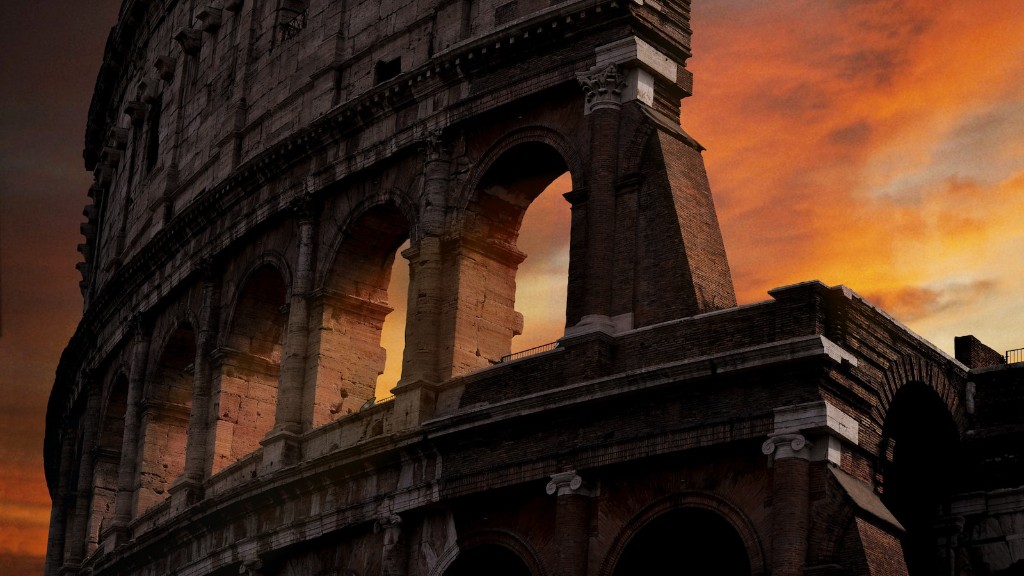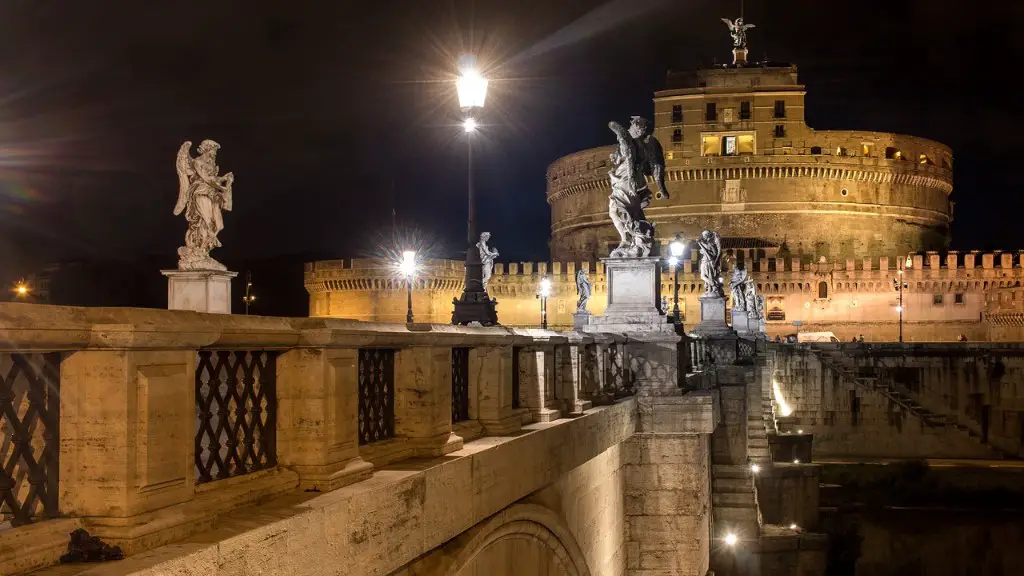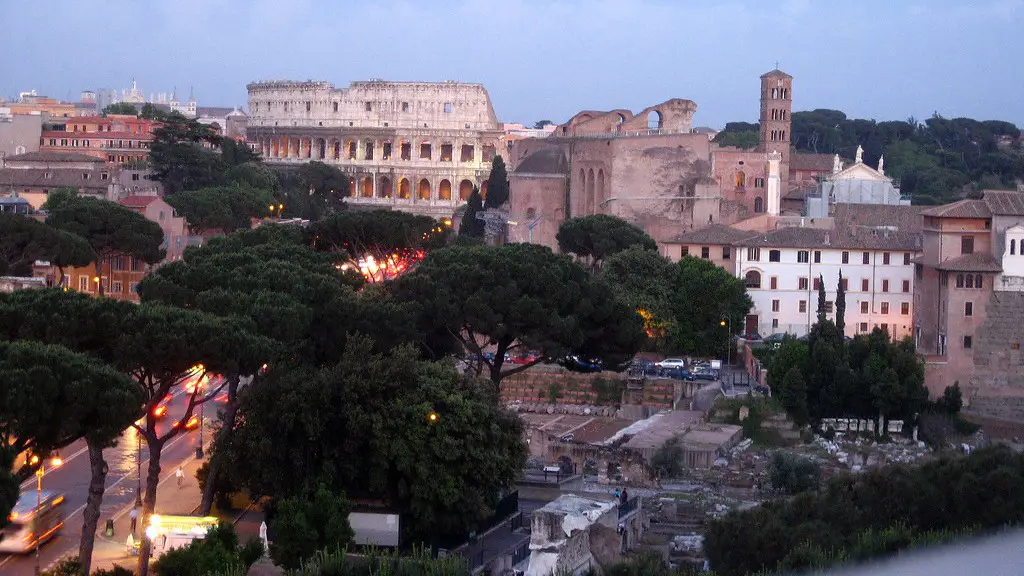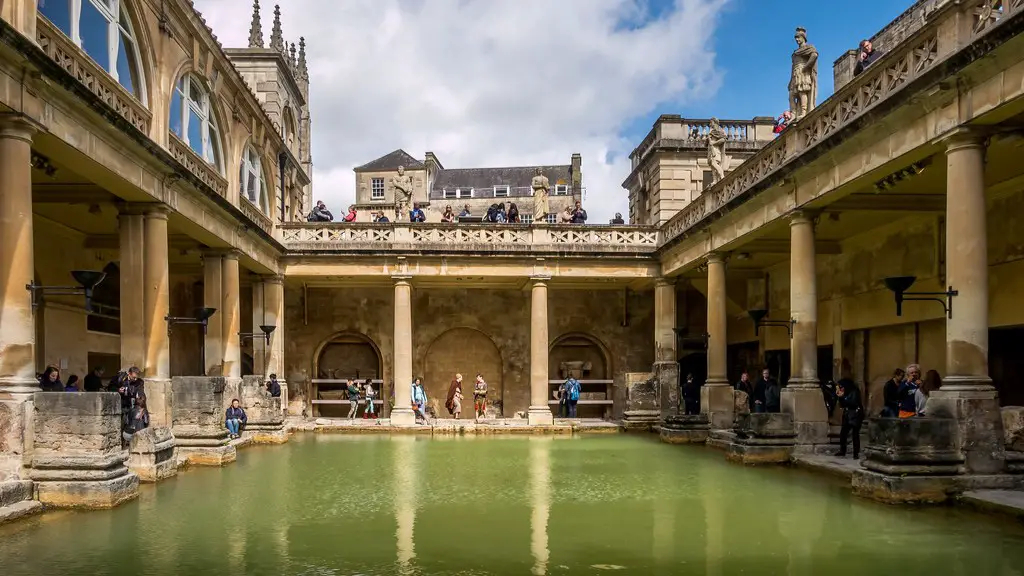The Pantheon was a temple dedicated to all the gods of Ancient Rome. It was built in the city of Rome between 118 and 125 AD. The Pantheon is one of the best-preserved Roman buildings in the world. It is also one of the most influential buildings in the history of architecture.
The Pantheon was one of the most important buildings in Ancient Rome. It was a temple to all the gods of the Roman Empire and was the largest dome in the world at the time it was built.
Who did the Romans worship in the Pantheon?
Jupiter is one of the most important gods in Roman mythology. He is the king of the gods and the protector of Rome. His wife, Juno, is the goddess of marriage and they ruled the world together with their council of gods.
The Pantheon is one of the most well-known and well-preserved buildings from ancient Rome. It was originally built as a temple to the gods, but was later converted into a church. The building is remarkable for its massive dome, which is the largest unreinforced concrete dome in the world.
What happens at the Pantheon
The Pantheon is a historical building in Rome that has been used as a tomb for several notable people, including the first two kings of unified Italy, Vittorio Emanuele II and his son Umberto I. Umberto I is placed in front of his wife Queen Margherita of Savoy, for whom pizza margherita was named. The tomb of renowned painter Raphael is also found in the Pantheon.
The Pantheon is a remarkable ancient Roman monument that still stands today. Its importance lies in the fact that it is the best preserved monument from ancient Rome. Throughout its history, the Pantheon’s innovative combination of both Greek and Roman style has been admired by many. Today, the Pantheon is still a popular tourist destination and is a testament to the genius and skill of the Roman people.
What is the story of the Pantheon in Rome?
The Pantheon is one of the most iconic buildings in Rome and has a long and rich history. Built by Agrippa between 25 and 27 BC, the Pantheon was originally a temple dedicated to the 12 gods of Rome. However, it was later rebuilt by Hadrian between 118 and 125 AD, resulting in the stunning building that we see today. The Pantheon is now one of the most popular tourist attractions in Rome, and its rich history is sure to fascinate all who visit.
The Roman builders were very clever in their construction of the dome. They first built a strong foundation in the shape of a rotunda. This provided support for the walls on either side of the dome. They then used these walls to buttress the dome itself. This made the dome very strong and prevented it from collapsing.
What was the Roman Pantheon architecture?
The Pantheon portico is an example of a symmetrical, classical design. It is made up of three rows of Corinthian columns, eight in the front and two rows of four, topped by a triangular pediment. The granite and marble columns were imported from Egypt, a land that was part of the Roman Empire.
This building is a must-see for anyone interested in Ancient Roman architecture. The building is in excellent condition and has been well-maintained throughout its history. Visitors can see the beautiful interior and exterior of the building, and learn about its interesting history.
What was Pantheon known for
The Pantheon was Rome’s grandest and most impressive temple. It was originally decorated with statues representing the greatest gods of Roman religion. However, it is unclear whether the Pantheon was explicitly dedicated to the entirety of the Roman deities.
1. The Pantheon was built in the 2nd century AD, making it one of the oldest surviving buildings from ancient Rome.
2. The Pantheon was originally built as a temple to the Roman gods.
3. The famous hole in the ceiling, or oculus, is the only source of natural light in the Pantheon.
4. The Pantheon has the largest unreinforced concrete dome in the world, measuring 43.3 meters in diameter.
5. The exterior of the Pantheon was once covered in bronze, which was stripped and melted down for reuse during the medieval period.
6. The interior of the Pantheon is surprisingly small, and a perfect sphere can fit inside the dome.
7. The Italian Renaissance artist Raphael is buried in the Pantheon.
8. The Pantheon is home to a popular restaurant, which serves traditional Roman dishes.
What is one fact about the Pantheon?
The Pantheon is one of the best-preserved ancient Roman buildings in Rome. It is largely because the Pantheon was turned into a church that it was kept remarkably well-preserved. In fact, you can still experience the building much as the ancient Romans would have.
The Pantheon timeline is a detailed history of the various Pantheon buildings that have existed in Rome. The first Pantheon was built in 27 BCE and was destroyed by fire in 80 CE. The second Pantheon building was hit by lightning and destroyed by fire in 110 CE. The Pantheon in Rome was repaired by Septimius Severus and Caracalla in 125 CE and again in 202 CE. The Pantheon in Rome was converted into a Christian church in 608 CE.
Why is the Pantheon so significant for the study of art history
The Roman Pantheon is a hugely important building in art history because of its age and veneration. Built between 118 and 125 AD, it is one of the most well-preserved buildings from ancient times. Though it is now a church, it was originally dedicated to the pagan gods of Rome. Its unspoiled state and prominent location make it a key destination for anyone interested in art history.
Herostratus was a Greek man who, in 356 BC, burned down the Temple of Artemis in Ephesus. Herostratus was motivated by a desire for fame, as he hoped that his deed would be remembered forever. Unfortunately for him, this was not the case, as the temple was quickly rebuilt and his name was largely forgotten. In fact, the only reason that Herostratus is remembered today is because his name was used as an example of someone who sought fame at any cost, even if it meant destroying something of great value.
Why is the Pantheon so remarkable?
The Roman Pantheon is one of the most impressive pieces of architecture from the ancient Roman empire. Its design is harmonious and scientific, and its proportions are striking and elegant. It is a reminder of the glory of the great Roman Empire.
This is false. Christianity was not illegal in the Roman Empire until 313.
Is Zeus a Pantheon
Zeus was the chief deity of the ancient Greek pantheon and was also known as Jupiter to the Romans. He was considered the god of the sky and of weather and his name may be related to that of the sky god Dyaus of the ancient Hindu Rigveda.
The Pantheon is a prominent landmark in Rome. Nearly two millennia old, this symbol of imperial power, and wonder of architecture still stands the test of time. The Pantheon is one of the best-preserved monuments from ancient Rome.
Warp Up
The ancient Romans built the Pantheon as a temple to all the gods of the Roman Empire.
The Romans used the Pantheon as a place to honor and worship their gods. They would have ceremonies and offer sacrifices to the gods in this space. The Pantheon was also used as a place to store the ashes of important people. This was a way to show respect and honor to those who had passed away.





